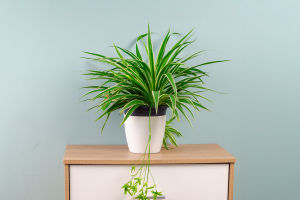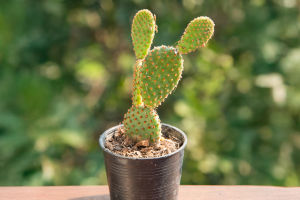If you've ever wandered through a garden filled with buzzing bees, fluttering butterflies, and busy hummingbirds, you've probably wondered: What makes these creatures so attracted to certain plants?
The answer is simple—pollinator-friendly plants. These plants play a crucial role not only in the success of your garden but also in maintaining the health of our ecosystems. Let's dive into why your garden should prioritize attracting pollinators.
The Role of Pollinators in Nature
Pollinators, including bees, butterflies, birds, bats, and even some mammals, are essential for the reproduction of many plants. They help plants reproduce by transferring pollen from one flower to another, allowing plants to produce fruit, seeds, and new plants. Without pollinators, the diversity of plant life would drastically decrease, leading to fewer food sources for animals, less oxygen production, and weaker ecosystems.
From tomatoes and berries to nuts and beans, pollination is the foundation of many of our food systems. That's why planting pollinator-friendly plants is so important—not just for your garden, but for the health of the planet.
Why Pollinator-Friendly Plants Matter?
While pollinators play a crucial role in nature, many of them are facing significant threats, including habitat loss, pesticide use, climate change, and diseases. By creating a garden that's inviting to pollinators, you can help protect these valuable creatures and provide them with a much-needed sanctuary.
Here's why planting with pollinators in mind matters:
1. Boosts Garden Health: Pollinators are vital for fertilizing plants, which helps produce larger and more abundant flowers, fruits, and vegetables. A garden filled with pollinator-friendly plants attracts the creatures that ensure this process continues smoothly.
2. Supports Biodiversity: Pollinators, including bees and butterflies, rely on a variety of plants for food and shelter. By planting a wide range of pollinator-friendly plants, you're helping to sustain a diverse ecosystem in your own backyard.
3. Encourages Natural Pest Control: Pollinators, particularly bees, often coexist with other beneficial insects like ladybugs, which help control pests. A healthy pollinator population can reduce the need for chemical pesticides, making your garden more eco-friendly and safer for you and your family.
4. Enhances Beauty and Fragrance: Pollinator-friendly plants are often the most beautiful and aromatic plants you can grow. Flowers like lavender, sunflowers, and coneflowers not only attract bees and butterflies, but their bright colors and sweet fragrances also enhance the aesthetics of your garden.
Best Pollinator-Friendly Plants for Your Garden
If you want to attract more pollinators, you'll need to plant a variety of flowers, herbs, and shrubs. Different pollinators are attracted to different colors, shapes, and types of plants. Here are some top pollinator-friendly plants to include in your garden:
1. Bee Balm (Monarda): Known for its vibrant red, pink, and purple flowers, bee balm is a favorite of bees, butterflies, and hummingbirds. It thrives in sunny spots and adds a pop of color to any garden.
2. Lavender: This fragrant herb is not only a beautiful addition to your garden but also a favorite of bees. Its purple flowers provide nectar for pollinators and create a calming environment.
3. Coneflower (Echinacea): A tough, drought-resistant plant, coneflowers attract bees, butterflies, and birds. Their bright, daisy-like blooms come in various colors, making them a versatile choice for any garden.
4. Milkweed: Essential for monarch butterflies, milkweed provides both nectar and a place for the caterpillars to feed. Planting milkweed helps support the struggling monarch population.
5. Sunflowers: These large, showy flowers not only attract pollinators but also produce seeds that birds love. Sunflowers are easy to grow and make an excellent addition to any garden.
6. Borage: A lesser-known but effective plant for attracting pollinators, borage produces beautiful blue flowers that draw in both bees and butterflies. It also makes a great companion plant for vegetables like tomatoes and squash.
Creating a Pollinator-Friendly Garden
Planting the right types of flowers is just the beginning. There are several steps you can take to create a truly pollinator-friendly environment in your garden:
1. Provide a Variety of Plants: Different pollinators are attracted to different plants, so it's important to plant a wide variety of species. Choose plants that bloom at different times throughout the growing season to provide a continuous food source for pollinators.
2. Avoid Pesticides: Pesticides can harm pollinators. Opt for organic methods of pest control, such as introducing beneficial insects, hand-picking pests, or using natural remedies like neem oil.
3. Create Shelter: Pollinators need shelter from the elements and predators. Consider leaving areas of your garden undisturbed, creating brush piles, or even building insect hotels to provide pollinators with a safe place to rest.
4. Offer Water Sources: Just like other creatures, pollinators need water. Adding a birdbath or a small shallow dish of water with stones for perching will attract bees, butterflies, and other pollinators.
Conclusion
Planting pollinator-friendly plants in your garden isn't just a trend—it's a vital contribution to the well-being of our ecosystems and food systems. By providing food, shelter, and water for pollinators, you help ensure that these vital creatures thrive. So, next time you're planning your garden, think about the pollinators. Choose plants that will not only brighten your space but also help sustain the natural world around you. Your garden—and the planet—will thank you.


